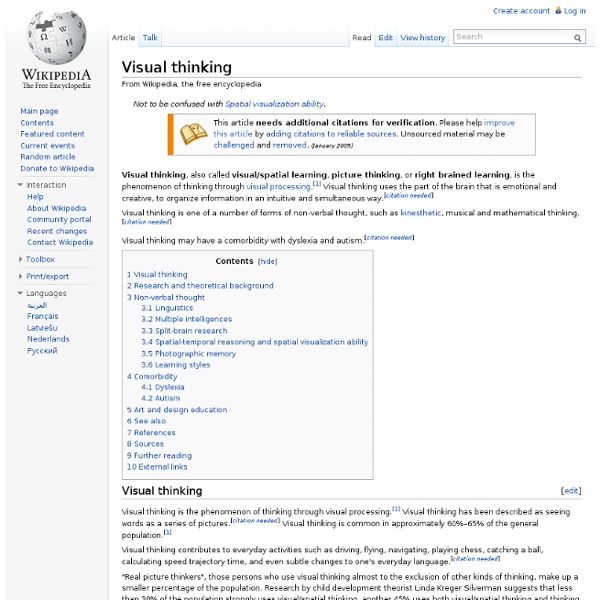Procédure d'entreprise
Un article de Wikipédia, l'encyclopédie libre. Une procédure est la manière spécifiée d'effectuer une activité ou un processus (ISO/DIS 9000). Elle représente la manière de mettre en œuvre tout ou partie d'un processus et est reproductible. Le processus représente le Quoi ?, la procédure représente le Qui fait Quoi ?, Où ? Ainsi, pour un processus donné peuvent correspondre plusieurs procédures : la chaîne d'activités est identique, mais les ressources (applicatives, humaines...) utilisées pour son exécution peuvent varier (par exemple, d'une filiale à l'autre, ou d'une direction à l'autre). La procédure ne doit pas être confondue avec le mode opératoire qui décrit la manière d'effectuer une des tâches spécifiée dans la procédure. Définition [1][modifier | modifier le code] « Une procédure d’entreprise est une procédure qui systématise l’organisation et la politique d’une entreprise dans le but d’atteindre certains des objectifs de cette entreprise. » Procédure de gestion documentaire
Will Project - A Program of Research on the Will and Its Applications
HORARIO AEROPUERTOS
["aerol\u00ednea","aeropuerto","arte","avi\u00f3n","blanco","ciudad","clip","conmutaje","dato","destino","estacion","gr\u00e1fico","hojas","horario","iconos","ilustraci\u00f3n","im\u00e1genes predise\u00f1adas","informaci\u00f3n","informes","londres","mensaje","mesa","negro","nuevo","paris","roma","salida","signo","sobre","s\u00eddney","tabla","tabl\u00f3n de anuncios","texto","tiempo","tokio","tren","vector","viajar","vuelo","york","\u00f3mnibus"] aerolínea aeropuerto arte avión blanco ciudad clip conmutaje dato destino estacion gráfico hojas horario iconos ilustración imágenes prediseñadas información informes londres mensaje mesa negro nuevo paris roma salida signo sobre sídney tabla tablón de anuncios texto tiempo tokio tren vector viajar vuelo york ómnibus Ver todas las palabras clave
Vizthink Rennes - BUG
Un nouveau jalon a été délicatement déposé sur le chemin très fréquenté de l’innovation sociale à Rennes lors de l’apéruche de jeudi dernier. Non pas consacré à l’open data (autre événement TIC pachydermique de cette rentrée), mais à la visualisation des connaissances et aux méthodes qui s’y rapportent. Philippe Mac Clenahan, consultant de profession, a exposé les fondamentaux de la « doctrine » vizthink fondée sur l’approche visuelle de la pensée et de la créativité. Initiée par des fondateurs américains (David Sibbet, voir notamment « Visual Meetings »), cette communauté est un assemblage cohérent d’approches graphiques, méthodologiques d’origine variées visant au même but : mieux comprendre, mieux concevoir par une participation plus active des citoyens / salariés basée sur une approche visuelle des données et des connaissances. Quelques photos : www.jardin-des-savoirs.fr Démo jardin des savoirs Septembre 2010 from bug on Vimeo. Richard De Logu / @mediatino
Humanistic psychology
Humanistic psychology is a psychological perspective which rose to prominence in the mid-20th century in response to the limitations of Sigmund Freud's psychoanalytic theory and B.F. Skinner's behaviorism.[1] With its roots running from Socrates through the Renaissance, this approach emphasizes individuals inherent drive towards self-actualization and creativity. It typically holds that people are inherently good. In the 20th century humanistic psychology was referred to as the "third force" in psychology, distinct from earlier, even less humanistic approaches of psychoanalysis and behaviorism. Its principal professional organizations in the U.S. are the Association for Humanistic Psychology and the Society for Humanistic Psychology (Division 32 of the American Psychological Association). Origins[edit] One of humanistic psychology's early sources was the work of Carl Rogers, who was strongly influenced by Otto Rank, who broke with Freud in the mid-1920s. Conceptual origins[edit]
Thinking Visually
Human Potential Movement
The Human Potential Movement (HPM) arose out of the milieu of the 1960s and formed around the concept of cultivating extraordinary potential that its advocates believed to lie largely untapped in all people. The movement took as its premise the belief that through the development of "human potential", humans can experience an exceptional quality of life filled with happiness, creativity, and fulfillment. As a corollary, those who begin to unleash this assumed potential often find themselves directing their actions within society towards assisting others to release their potential. Adherents believe that the net effect of individuals cultivating their potential will bring about positive social change at large. Roots[edit] The movement has its conceptual roots in existentialism and humanism. In the middle of the 1960s, George Leonard did research across the United States on the subject of human potential for the magazine, Look. Authors and essayists[edit] Notable proponents[edit] Notes[edit]
Visual Thinking + Synthesis
Photo by Ken Yeung I really enjoy talking complex subjects, processes or business problems and boiling them down to their core essence. This is becoming known as the process of "Visual Thinking". My style of visual thinking is immediately recognizable and has helped me build a strong following of influential professionals who use my visuals in their own presentations and documents.
University Degree Courses Featuring Dr. Steve Taylor
These are the university courses which I teach on, all three of which I wholeheartedly recommend. At the moment, the majority of my teaching is on the BA in Psychology and Society and the MA in Interdisciplinary psychology, both at Leeds Met University. If you would like further information about any of the courses, feel free to write to me direct. MA Interdisciplinary Psychology — Leeds Metropolitan University *** Now available as an online distance learning course! Core Modules Central Problems in PsychologyContemporary Psychoanalytic ApproachesCritical MethodologiesFoundations of PsychoanalysisIndependant ProjectMindfulness Based ApproachesTranspersonal Psychology Please note this list is not exhaustive and modules may change from time to time. Course Description Interdisciplinary Psychology applies psychological insights about self, consciousness and psyche in new contexts, outside the traditional disciplinary, geographic and historical boundaries of Western Psychology. Course Overview
Tales from the Wonder Emporium: Visual and Creative Thinking in Business



